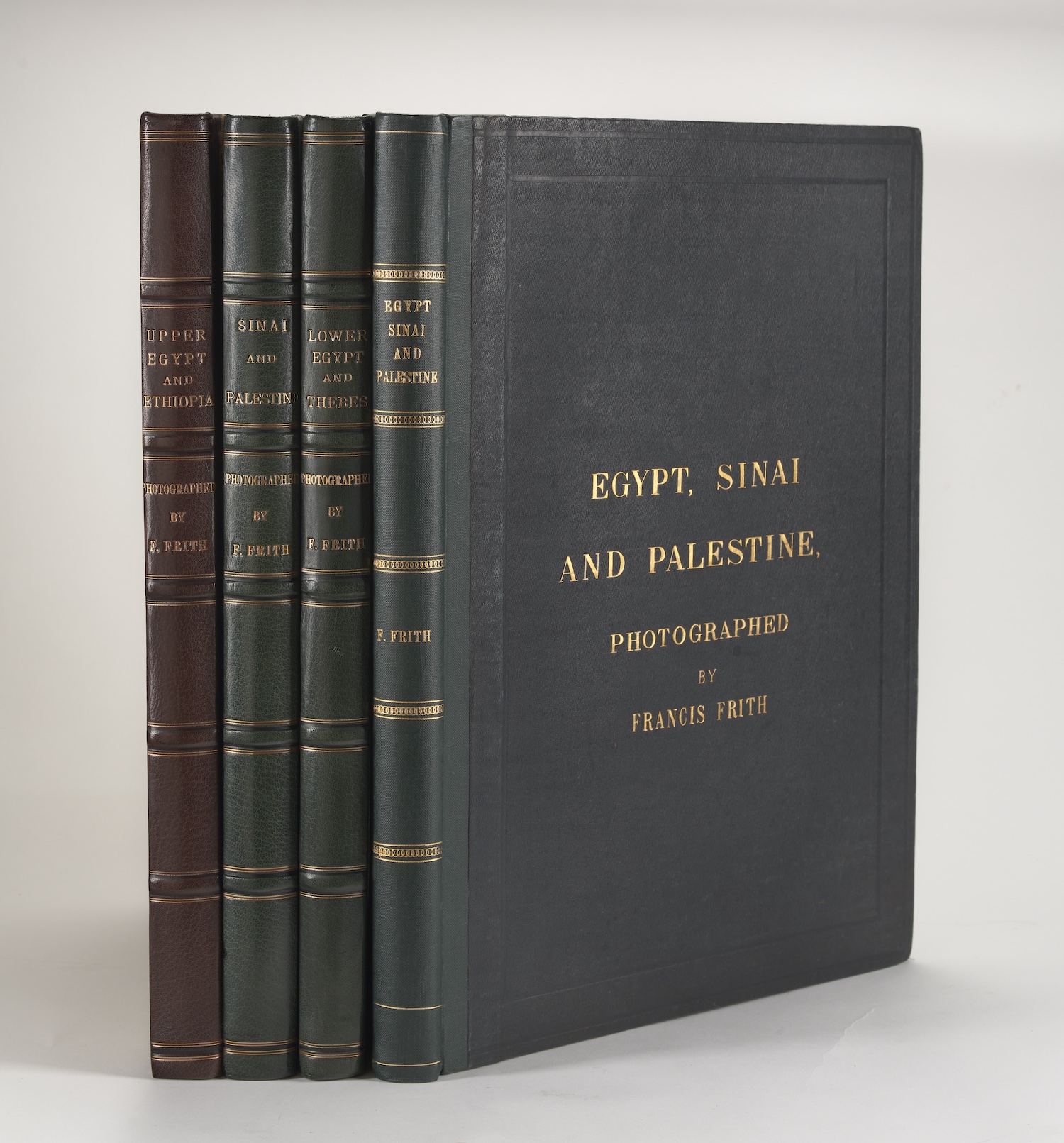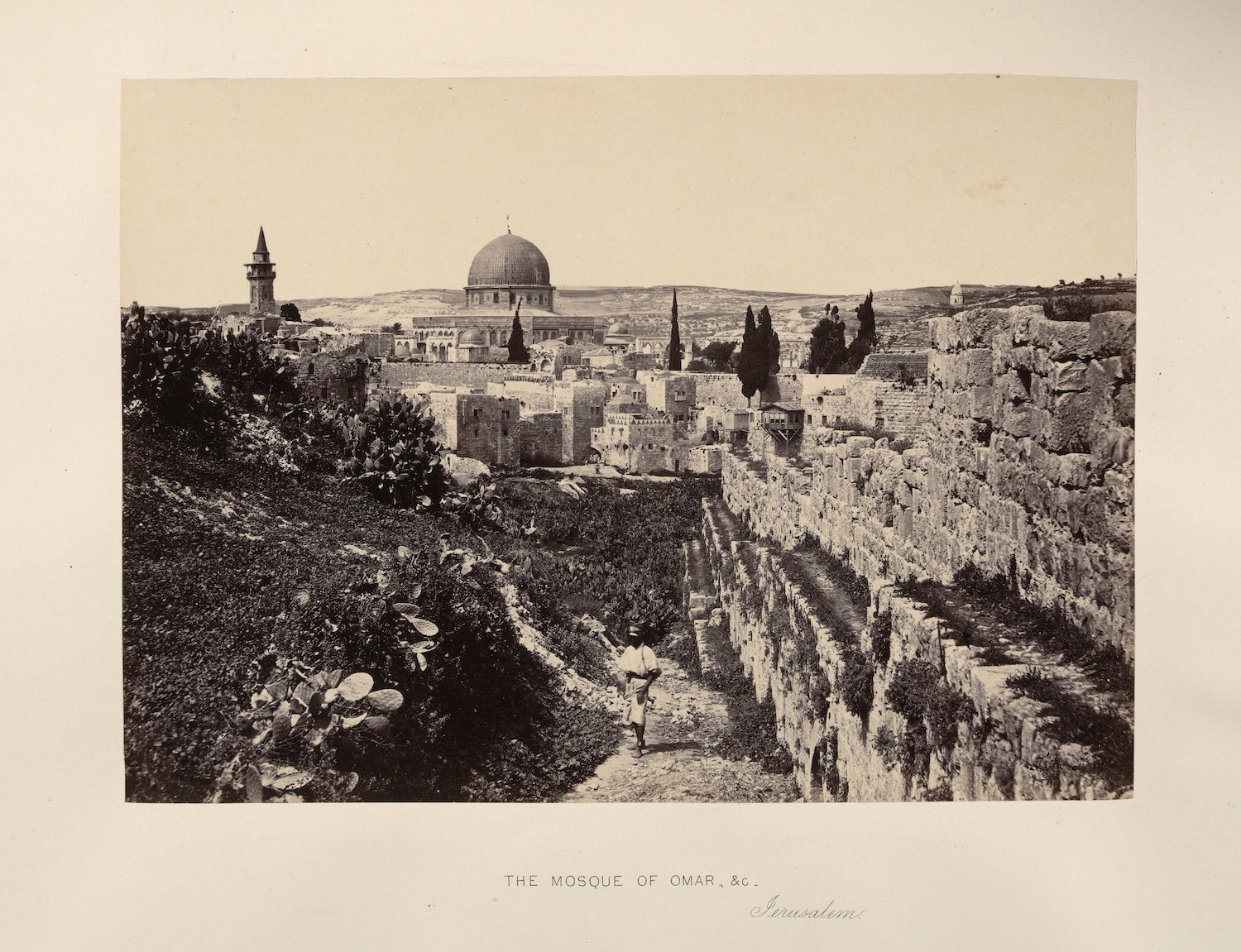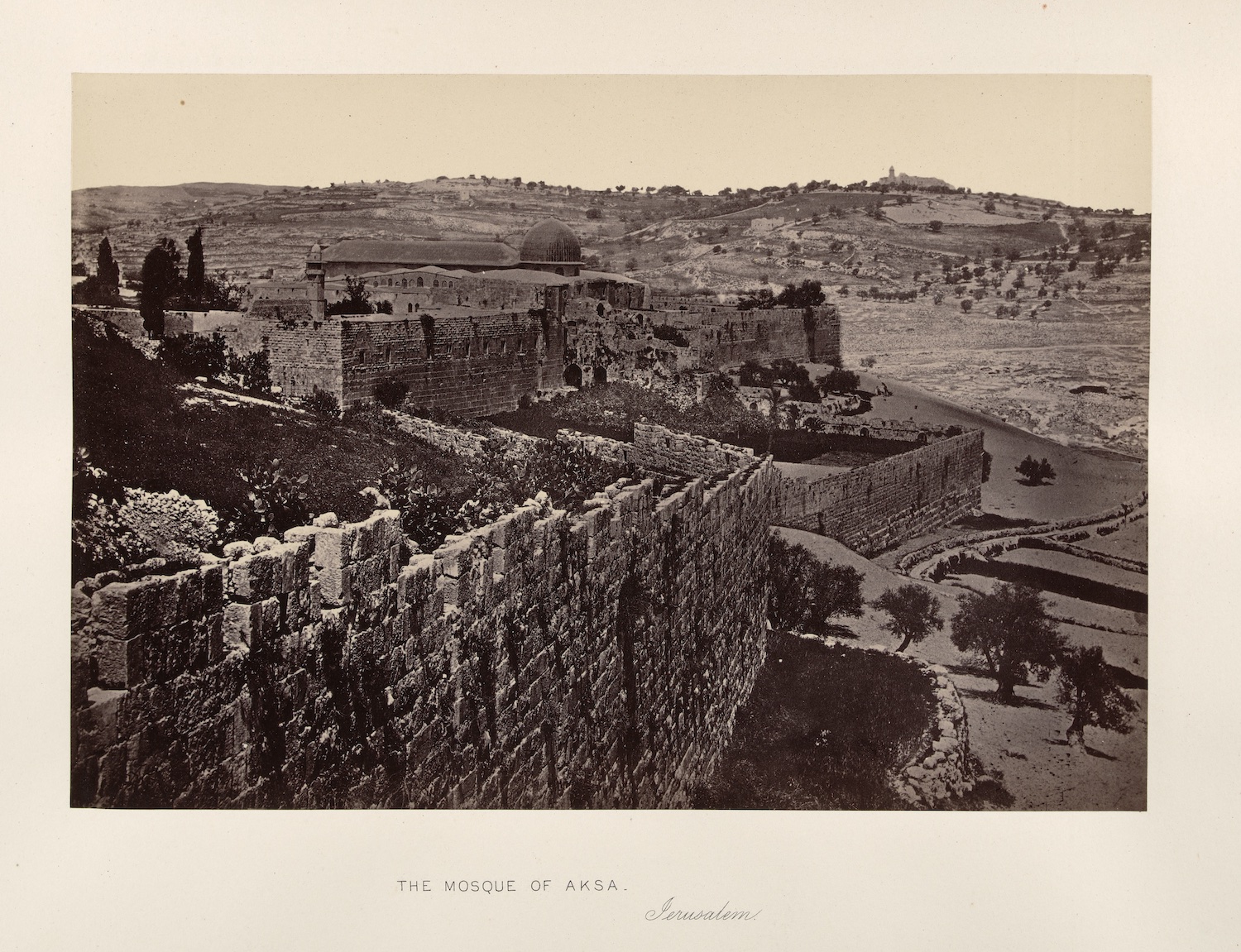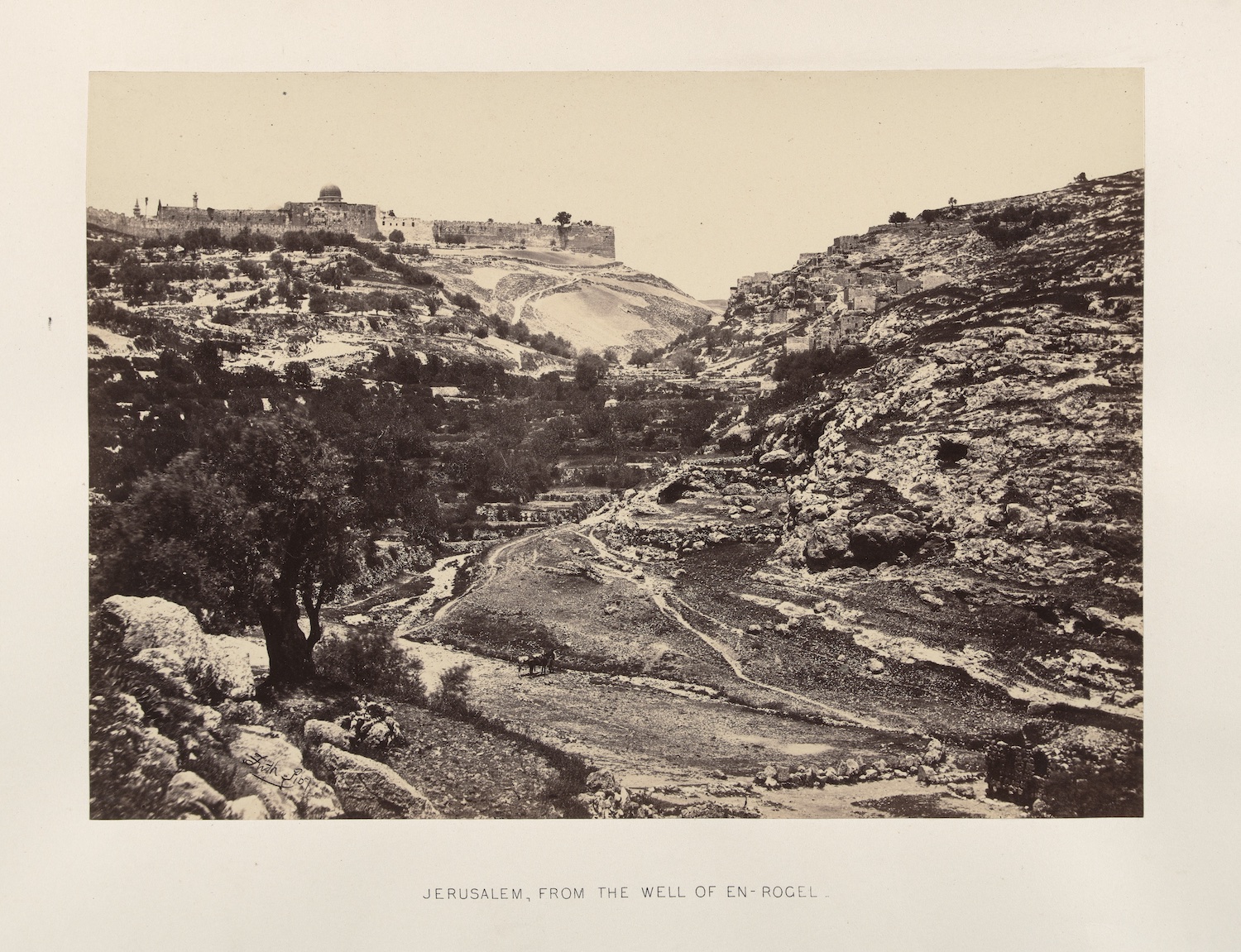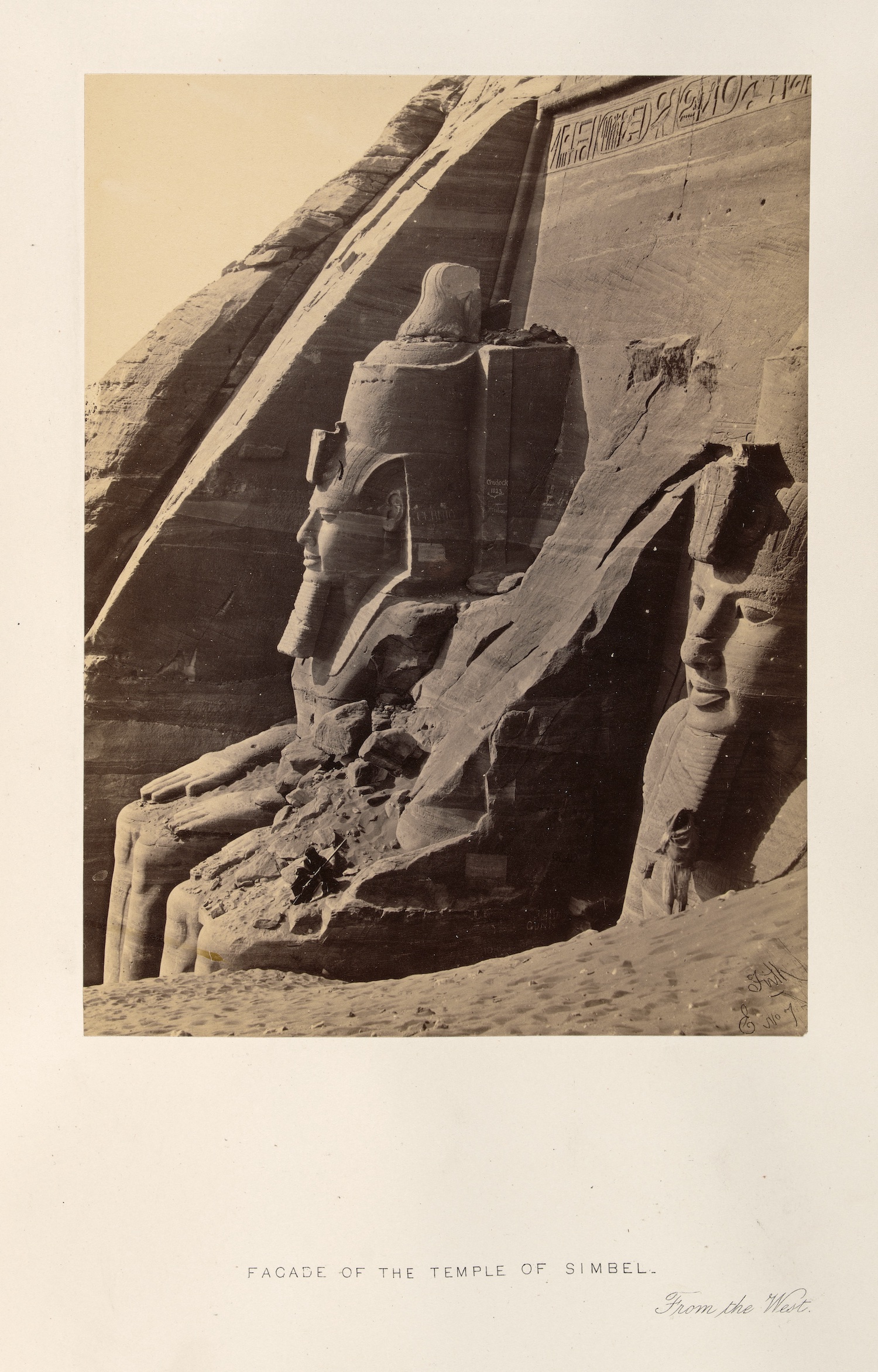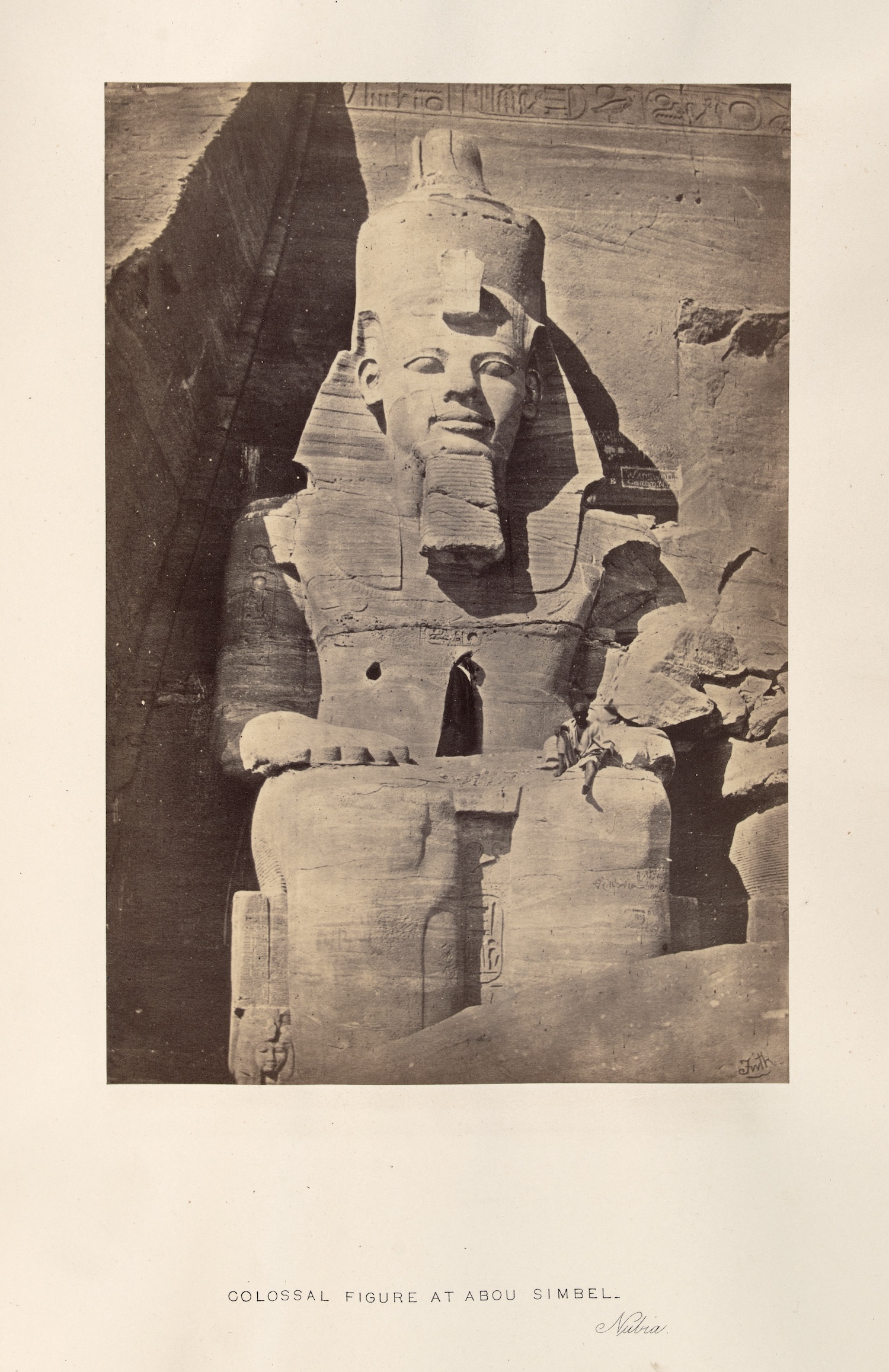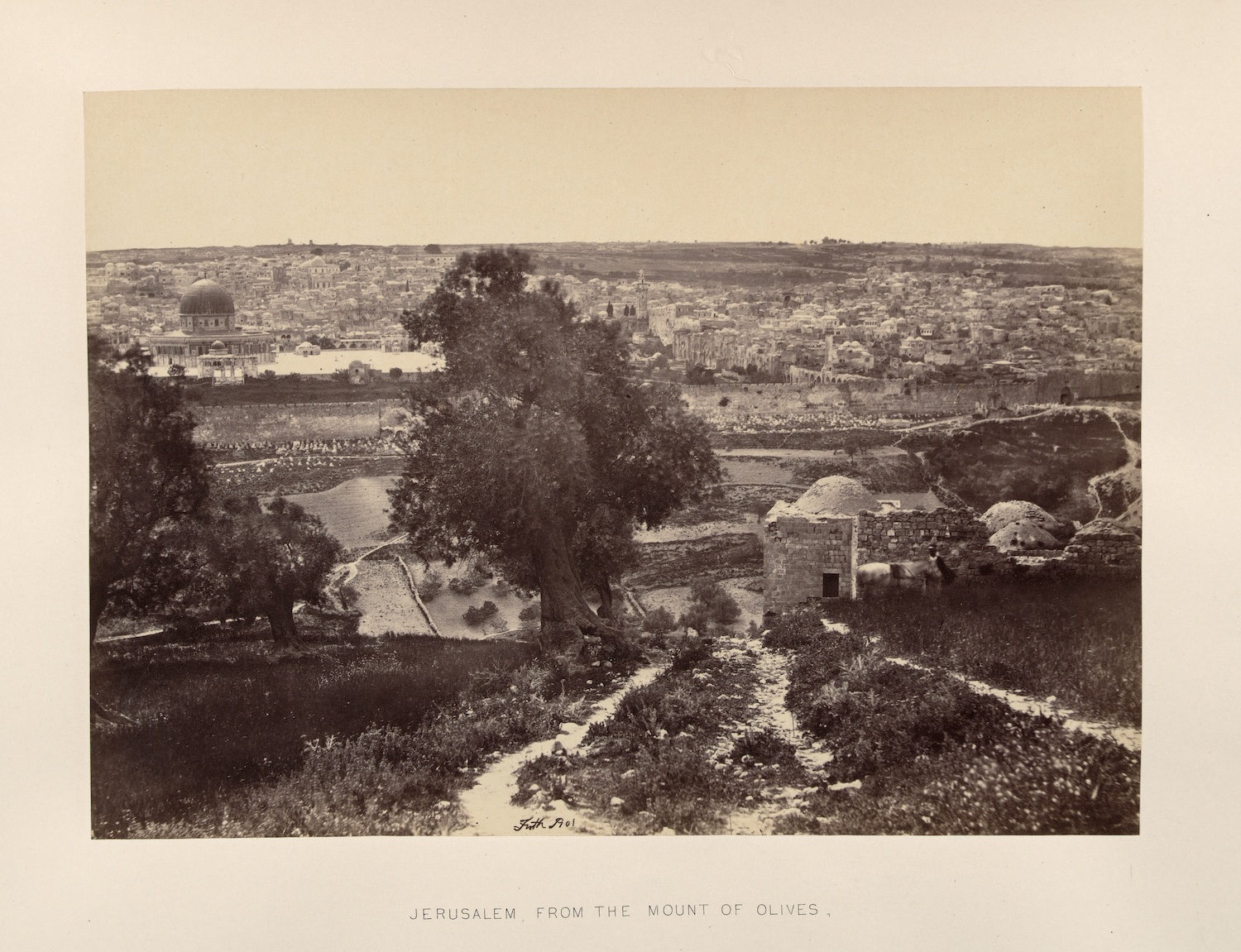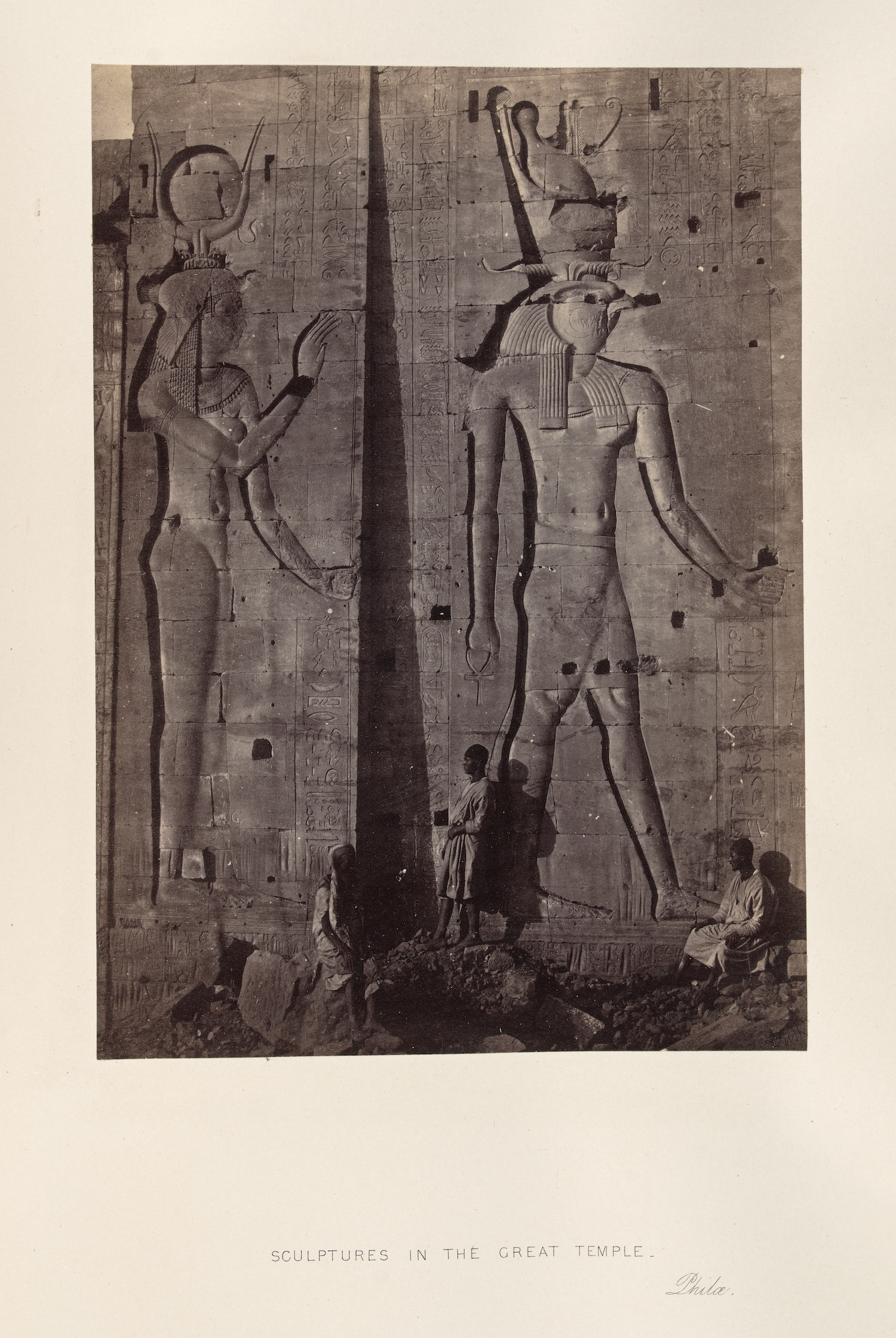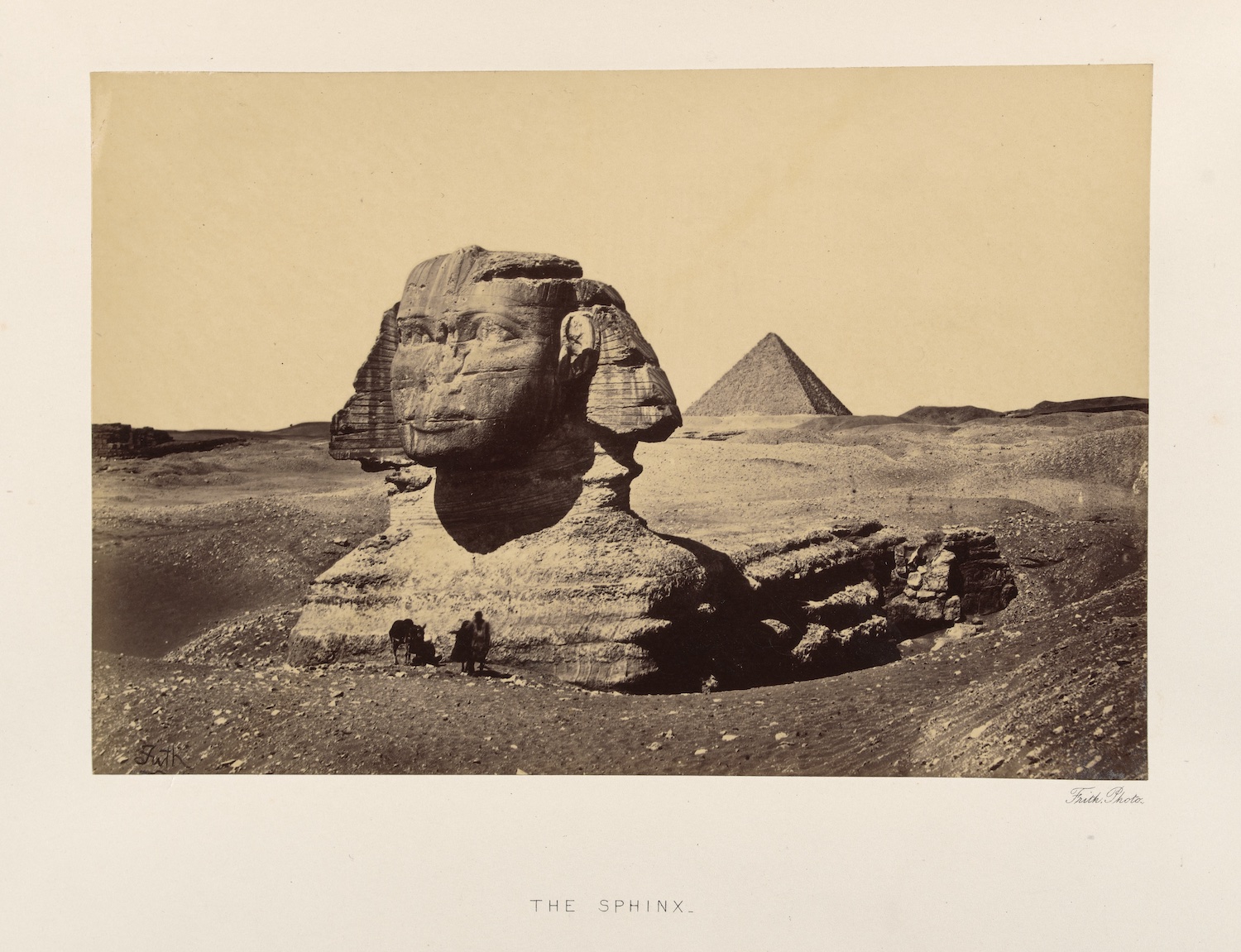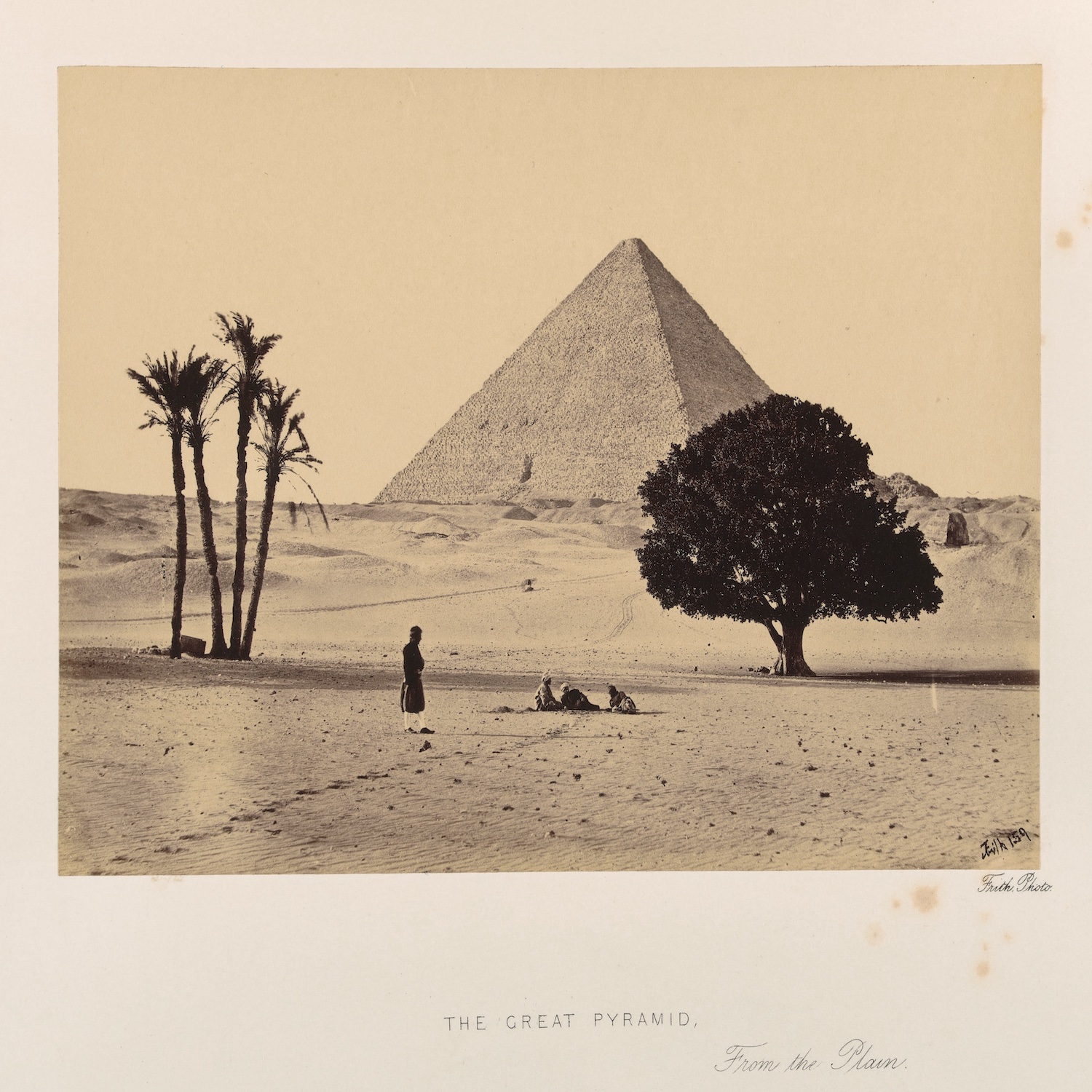“The books of Francis Frith inaugurated the first golden age of albumen-silver photographic illustration” – The Truthful Lens
FRITH, FRANCIS.. Photographs of the Holy Land and Egypt comprising: [I:] Sinai and Palestine; [II:] Lower Egypt, Thebes, and the Pyramids; [III:] Upper Egypt and Ethiopia; [IV:] Egypt, Sinai and Palestine. Supplementary Volume.
London, Glasgow, and Edinburgh: William MacKenzie, [1863].
Four volumes. Folio. 148 albumen photographs (37 in each volume), each approx. 6½ x 9 inches, mounted. Most signed in the negative. Original green and brown cloth, rebacked in morocco and cloth. Several text leaves with blind stamp, neat shelf numbers on title versos. Scattered foxing rarely affecting images, light edge wear to some leaves, occasional fading to prints. The photographs are generally in outstanding bright condition with rich tones and good contrast.
This is a splendid set of the best and most extensive collection of Frith’s photographs of the Holy Land and Egypt. This edition’s gold-toned photographs are much preferred over the earlier editions for their “stronger quality” (Gernsheim).
Frith made three photographic expeditions to Egypt, Sinai, Ethiopia, and Jerusalem between 1856 and 1860. “On the first, he sailed up the Nile to the Second Cataract, recording the main historic monuments between Cairo and Abu Simbel. On the second, he struck eastwards to Palestine, visiting Jerusalem, Damascus and other sites associated with the life of Christ. The final expedition was the most ambitious, combining a second visit to the Holy Land with a deeper southward penetration of the Nile. His photographs of the temple at Soleb, 800 miles south of Cairo, represent a genuinely pioneering achievement. Unlike many travel photographers of this period, Frith used the wet collodion process in preference to the more convenient paper-based calotype. Because it involved chemically sensitizing the glass plates on site, this process posed particular problems in a climate dominated by heat, dust and insects. Commenting sardonically on how his chemicals often boiled on contact with the glass, he nevertheless produced negatives that are remarkable for their consistently high technical standard … Frith photographed most of the key monuments several times, combining general views with close studies of their significant details and broader views of their landscape environment. The clarity of his images proved to be of immense value to archaeologists. The photographs are also often powerfully composed, revealing an understanding of the poetic qualities of light that gives them lasting aesthetic value”
(McKenzie, Grove Art).
Upon his return to London, Frith published a selection of his photographs under the title Egypt and Palestine Photographed and Described, in two volumes with 76 photographs. The present set, with 144 photographs, nearly doubled the size of that work. It is preferable in every respect. The earlier work contained a haphazard assortment of images, while this massive four-volume edition is organized based on Frith’s expeditions, giving them a narrative quality for the first time. Furthermore, many of the images appear here for the first time. Frith’s publication of multiple images under the same title obscures the fact that much is new here. Most important, “the prints in this edition are of much stronger quality than those in the first edition having been gold-toned” (Gernsheim).
For Frith, photography was destined to rank with other pictorial arts and even to surpass
them, because at its heart was “its essential truthfulness of outline, and to a considerable
extent, of perspective and light, and shade.” Frith’s books “proved immensely popular,
[their] combination of remarkable photographic views with Frith’s first-hand written account providing a surrogate tour of the Near East for Victorian tourists and would-be tourists alike” (Hannavy). These albums contain some of Frith’s finest photographs, including the series of panoramic views of Jerusalem, the Sphinx and Great Pyramid of Giza, Karnak, the colossal sculpture at Abu Simbel, the Pool of Hezekiah, the Thebes Entrance to the Great Temple Luxor, The Osiridae Pillars and Great Fallen Colossus, and many others. They encompass spectacular views of Jerusalem (among the earliest images of the ancient city still obtainable), Cairo, the pyramids at Giza, Philae, and other views of now-lost or decayed sites in Egypt, as well as biblical sites in Palestine including the Jerusalem, Dead Sea, Gaza, Damascus, and other areas of what is now the modern state of Israel.
This is a rare set of all four volumes of Frith’s masterwork. Three-volume sets turn up occasionally, but examples including the fourth (“Supplementary”) volume are rarely seen in the market.
The Truthful Lens 61. Gernsheim, Incunabula of British Photographic Literature 1839-1875 195.
$72,000



